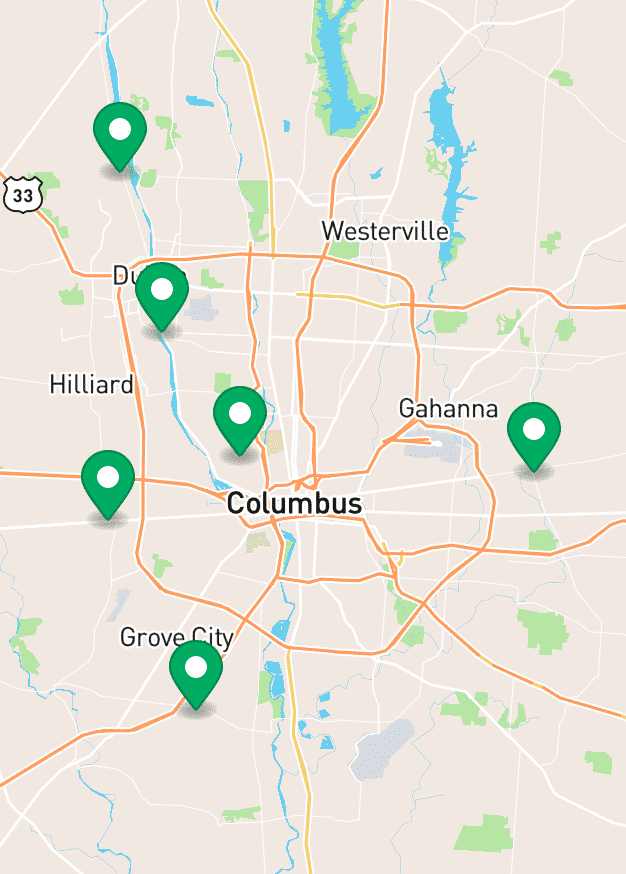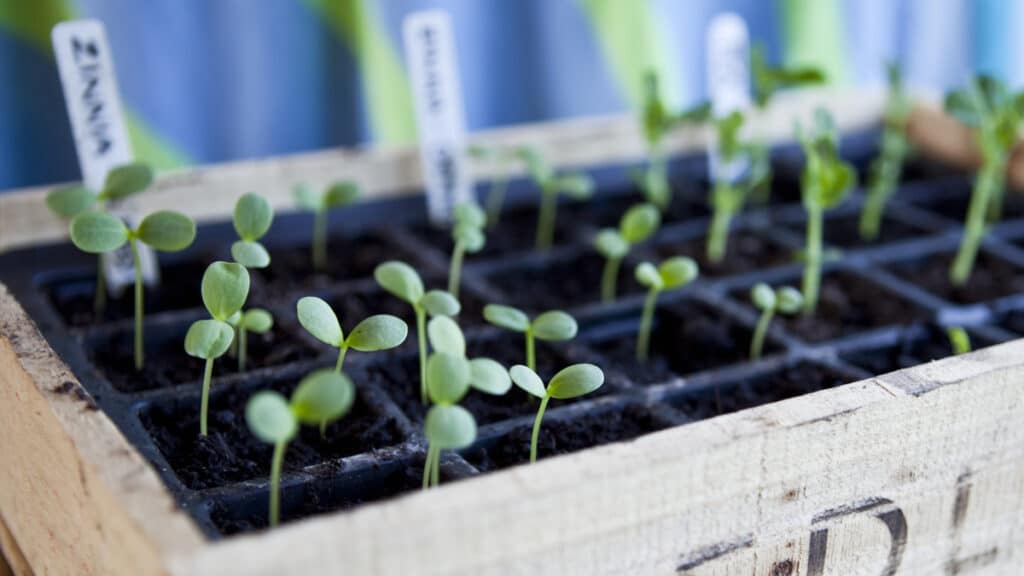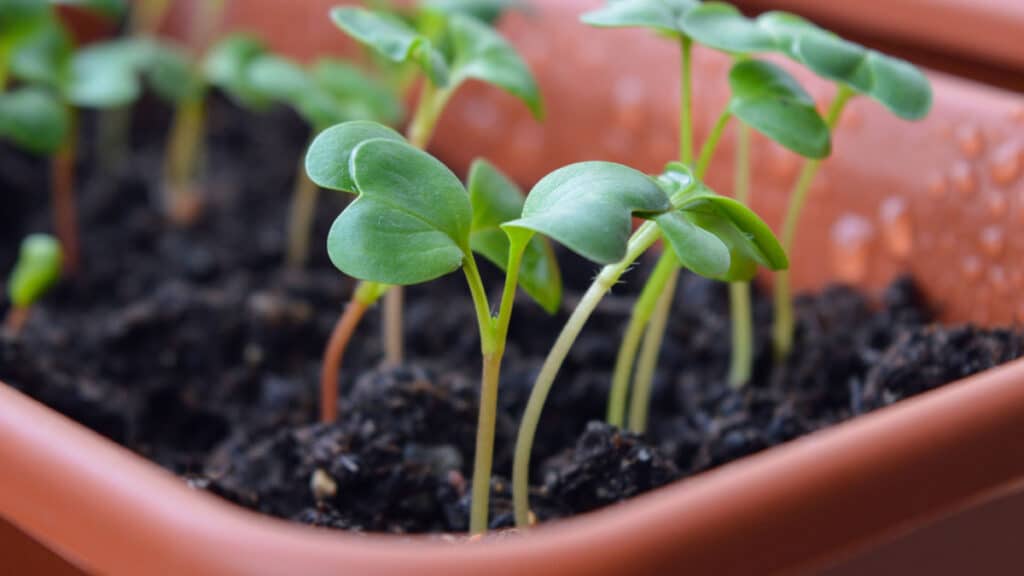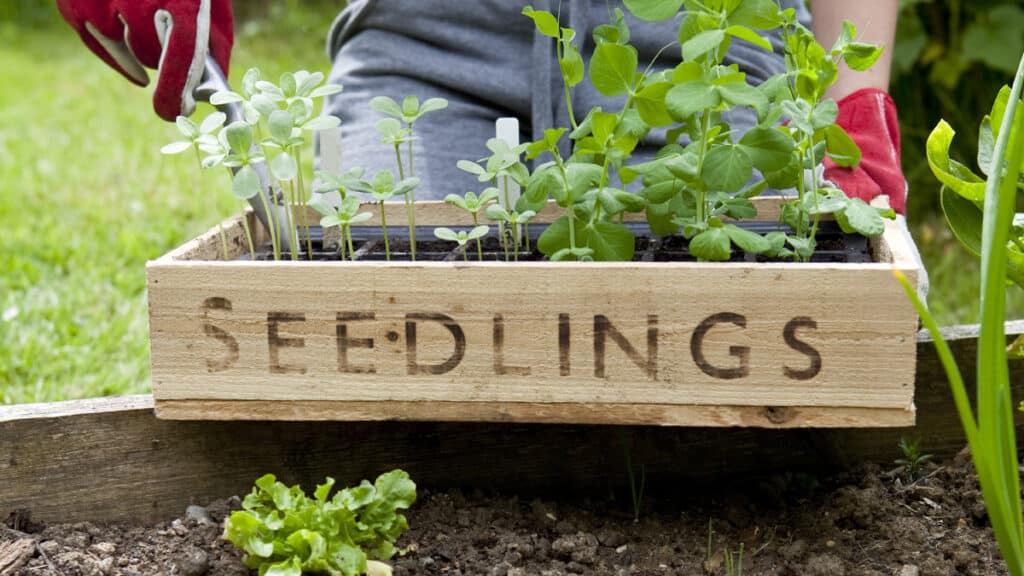Yes, you can simply buy seedlings from our greenhouse (and yes we have tons of different herbs, veggies and flowers) but there are a few reasons why you may wish to start some of your own plants. By starting your own seeds, you have access to varieties of flowers, vegetables and herbs that may not be available in a greenhouse or may be harder to find. For example, less popular varieties of herbs and perennials as well as certain organic or heirloom vegetables might not all be available as plants, or supply may be limited. Plants with teeny tiny seeds sometimes are started indoors because the seeds can easily wash away in a heavy rainstorm and they may have a difficult time competing with weeds during establishment. Starting your own seeds is also a great way to extend the growing season so you can enjoy a longer harvest using the succession planting method. Succession planting is the practice of sowing seeds at intervals ranging from 7-21 days to have a consistent ready to eat supply of produce or greens throughout the entire growing season. Try this with pole beans, carrots, lettuce, chard, arugula, basil and cilantro. So why not come browse our seed selection and maybe sow some seeds this year?
Traditionally, seeds are started in cell pack flats (traditionally like what you purchase in our greenhouse) or in biodegradable type pots. There are various sizes and configurations of the plastic trays, some even will fit perfectly in a windowsill. We also carry peat and coir pots in sizes ranging from 2” to 4”. These pots can be directly planted in the ground and will biodegrade. The popular Jiffy-7 pellet is another option, it is a flat, peat-moss wafer. When moistened, the Jiffy-7 expands to form a small, self-contained pot of soil into which a seed is sown directly. This is an excellent choice when sowing seed of plants that do not like their roots disturbed during transplanting.
It is best to use a light, soilless mix when starting seeds. These mixes are sterile, meaning young seeds do not have any weed seeds to compete with, and there are no harmful bacteria, insects or other pests in the soil right away. Good seed mixes also contain adequate nutrients to carry seedlings through until transplanting. We have a couple options for you to try. Do not use garden soil, as seeds will not germinate well in the heavy soil, and a fungus disease called damping off is common.
Most seeds require warm soil in order to germinate. You will need to heat the soil of the seedling flats with a heat mat, heat tray or heating cable. Seed trays can also be placed on top the refrigerator or hot water heater. If you put seed-starting trays on a windowsill; nighttime temperatures are too cool to allow for good germination. So be sure to move them overnight if you are using this as an early starting method! Seeds need consistent warm temperatures of 75 degrees or warmer for optimum germination.
Seeds need to be kept constantly moist in order to germinate. Moisten the soil thoroughly before planting. Water when the surface is dry with a misting nozzle or plastic spray bottle until the soil is saturated. The medium should be constantly moist, but not soggy. It is important not to overwater, which could drown the seeds and tender seedlings, but also not to permit the flat to dry out.
Once seedlings have grown a half-inch or so, you should water less frequently. Let the soil dry slightly between watering, which will help the seedlings stretch and develop a strong root system. Seedlings will also need light and the best method is to use grow lights. We have LED and fluorescent bulbs and tubes and even adjustable kits that contain bulbs and fixtures. Position the lights just an inch or two away from the plants. Lights must be on at least 14-16 hours a day. As your seedlings grow, raise the lights accordingly so they do not bump into the lighting fixture. If your seedlings do not get enough light, they will become weak and spindly. Fertilize seedlings weekly with half-strength, balanced, organic fertilizer. Thin seedlings if they become overcrowded, choosing the healthiest, strongest seedlings to save.















